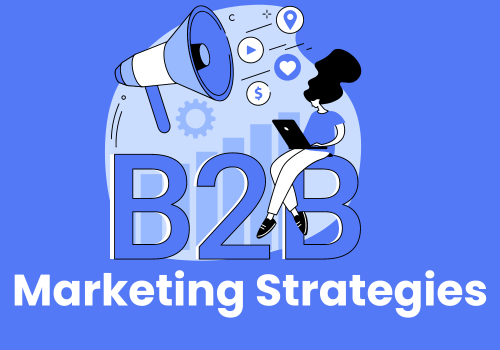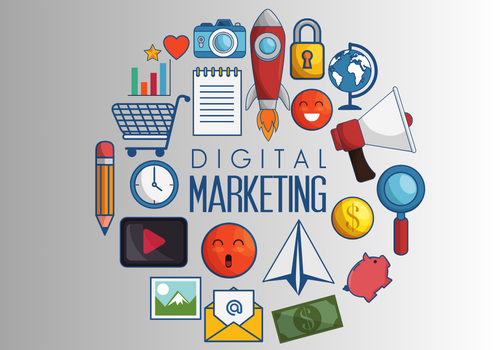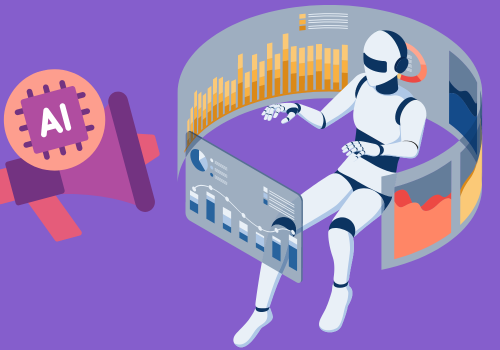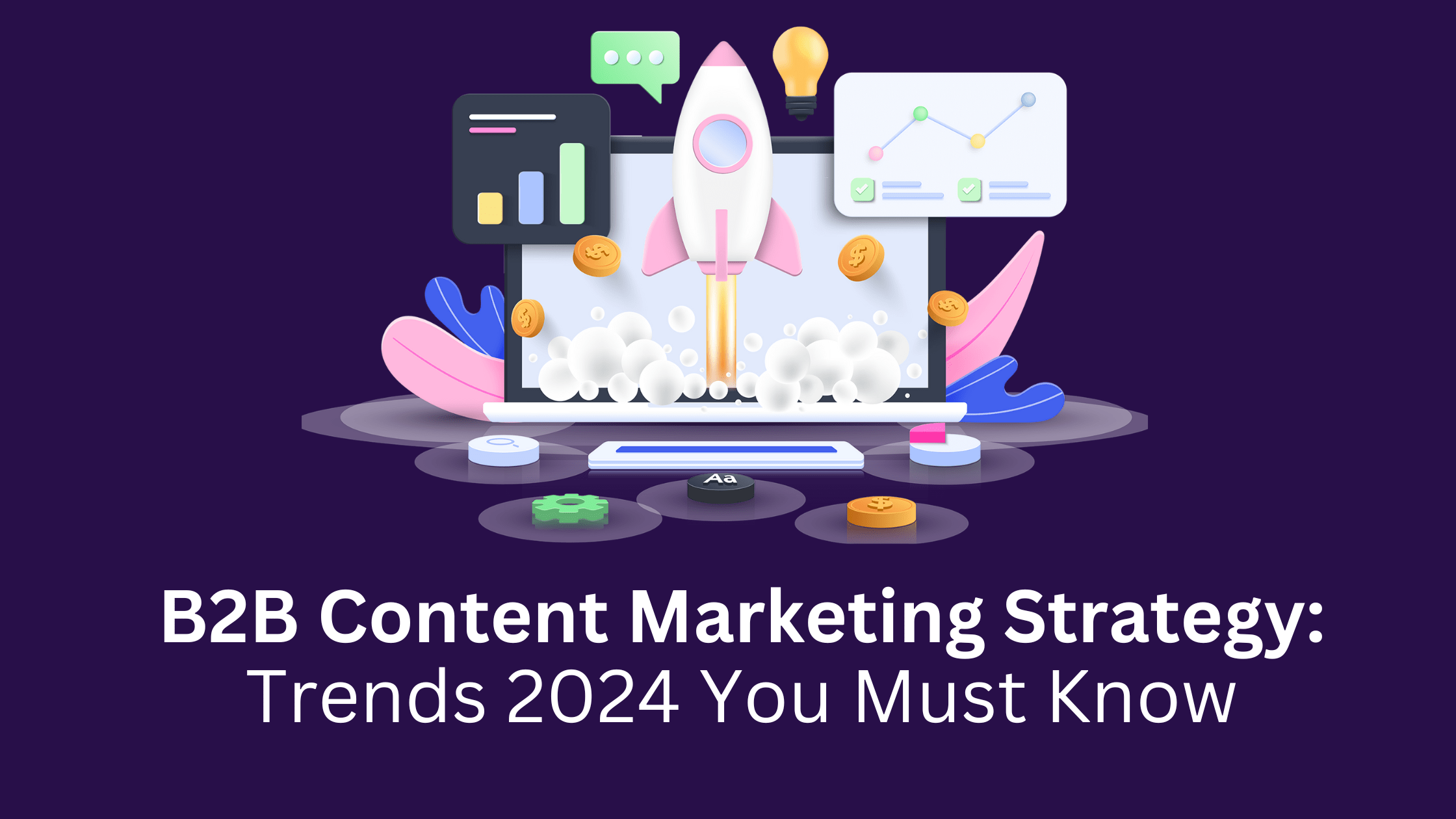B2B Content Marketing
In today’s digital world, businesses need smart strategies to connect with other businesses effectively. In this context, business-to-business content marketing is important. But what exactly is B2B content marketing, and why is it so important? Business-to-business (B2B) content marketing has become an essential strategy for organizations trying to interact with and win over other enterprises as clients.
B2B content marketing is all about creating and sharing valuable content specifically designed to attract and engage other businesses. Whether it’s blog posts, whitepapers, or videos, the goal is to provide useful information that helps solve problems or addresses challenges faced by other businesses.
The importance of B2B content marketing cannot be overstated. It allows businesses to build trust, establish authority in their industry, and ultimately drive conversions. By delivering high-quality content that resonates with their target audience, businesses can position themselves as thought leaders and valuable partners.
The key objectives of B2B content marketing are clear: to generate leads, nurture relationships with prospects, and ultimately drive sales. By focusing on these objectives and delivering content that adds value to other businesses, companies can unlock new opportunities for growth and success in the competitive B2B landscape.
Understanding the B2B Audience

For all businessmen, understanding your audience is key to success. When it comes to B2B (business-to-business) marketing, this understanding becomes even more crucial. But how do businesses go about understanding their B2B audience?
Firstly, identifying target personas is essential. This involves creating detailed profiles of the different types of businesses that you want to reach. By understanding the characteristics, needs, and preferences of these target personas, businesses can tailor their marketing efforts to resonate with them effectively.
For example, a software company targeting small businesses may identify target personas such as “The Busy Entrepreneur,” who values simplicity and affordability, or “The Tech Startup,” who seeks innovative solutions to streamline operations.
Once target personas are identified, the next step is to address their pain points and challenges. Businesses need to put themselves in the shoes of their B2B audience and understand the issues they face on a daily basis. This could include challenges related to efficiency, cost-effectiveness, scalability, or regulatory compliance, depending on the industry and business sector.
By addressing these pain points and challenges through their marketing efforts, businesses can position themselves as valuable partners who understand the needs of their B2B audience and offer solutions that help them achieve their objectives and solve challenges.
For instance, a marketing agency targeting B2B clients may create content that addresses common pain points, such as limited marketing resources, a lack of expertise in digital marketing, or difficulty measuring ROI (return on investment).
Content Strategy Development
In digital marketing, crafting a solid content strategy is the cornerstone of success for businesses engaging in B2B (business-to-business) content marketing. This strategy involves two crucial components: research and analysis and goal setting with Key Performance Indicators (KPIs).
Firstly, research and analysis play a pivotal role in developing a content strategy that resonates with the target B2B audience. This entails conducting thorough research into the industry landscape, competitor strategies, and the preferences of the target audience. By analyzing market trends, consumer behavior, and competitor content, businesses can gain valuable insights into what types of content are most likely to engage their B2B audience effectively.
Moreover, understanding the unique needs, pain points, and challenges of the target B2B audience is essential for crafting content that provides genuine value and solutions. This could involve conducting surveys, interviews, or focus groups with existing customers or industry experts to gather insights and validate content ideas.
Once research and analysis are complete, the next step is goal setting and establishing Key Performance Indicators (KPIs) to measure the success of the content strategy. Setting clear and measurable goals ensures that businesses have a roadmap for their content marketing efforts and can track progress effectively.
Goals in B2B content marketing may vary depending on the objectives of the business, but common goals include increasing brand awareness, generating leads, driving website traffic, or nurturing existing customer relationships. Each goal should be specific, measurable, achievable, relevant, and time-bound (SMART) to ensure clarity and accountability.
Accompanying these goals are key performance indicators (KPIs) that businesses use to measure progress and evaluate the effectiveness of their content strategy. These KPIs could include metrics such as website traffic, engagement rates, lead generation, conversion rates, or even qualitative feedback from customers.
Content strategy development in B2B content marketing involves conducting thorough research and analysis to understand the target audience and industry landscape, as well as setting clear goals and KPIs to measure success. Businesses can create content that resonates with their B2B audience and drives meaningful results for their business.
Types of Content for B2B Marketing

There are many types of content that can be used for B2B marketing, depending on the goals, audience, and stage of the buyer’s journey. Some of the most common and effective types of content for B2B marketing are:
- Blog posts and Articles:Blog posts and articles are a staple in B2B content marketing. They provide valuable information, establish your brand as an industry leader, and drive traffic to your website. They’re versatile, shareable, and great for SEO. They can be anywhere from 300 to 2000 words or more, and they can be about pretty much any topic that’s meaningful to your audience. Try to create evergreen content when you can. While seasonal content relates to current events, evergreen content is always applicable. This is because search engines tend to reward site content that stands the test of time. Long-form content packed with useful information usually outperforms shorter, quick hits, so when possible, try to lengthen your content.
- Whitepapers and Case Studies: Whitepapers and case studies are long-form research documents that dive deep into specific topics with academic fervor. They are usually gated content offers because, because they deliver more value than blog posts, they usually require the reader to provide personal details in order to “unlock the gate.” For example, Personali offers a variety of white papers on topics about behavioral economics in e-commerce shopping. They only require a short form of contact information to be filled out before being able to download their valuable content. Readers who fill out their form are, in essence, expressing great interest in the topic at hand and in Personali’s overall offering, which is what makes gated content a great way to collect high-quality website leads.
- Infographics and Visual Content: Infographics and visual content are a great way to present complex information in an easy-to-understand format. They can increase traffic to your website and are very shareable. Infographics can be used to illustrate statistics, data, and other information in a visually appealing way.
- Videos and Webinars: Videos and webinars are a great way to engage your audience and provide them with valuable information. They can be used to demonstrate products, provide tutorials, and answer frequently asked questions. Webinars are live events that allow you to interact with your audience in real-time. They are a great way to build relationships with your customers and establish yourself as a thought leader in your industry.
Optimizing Content for B2B SEO
Optimizing content for B2B SEO is the process of creating and improving web pages that rank well on search engines and attract potential customers who are looking for solutions that your business offers. B2B SEO is different from B2C SEO because it targets a specific and narrow audience of decision-makers and influencers in various industries and sectors. Therefore, optimizing content for B2B SEO requires a strategic approach that considers the following aspects:
- Keyword research and targeting: This is the first step in optimizing content for B2B SEO. It involves finding and selecting the most relevant and profitable keywords that your target audience is searching for on Google and other search engines. Keyword research and targeting help you understand the intent, needs, and challenges of your prospects and customers, as well as the level of competition and demand for each keyword. You can use tools like Ahrefs, Moz, or SEMrush to conduct keyword research and analysis.
- On-page optimization techniques: This is the second step in optimizing content for B2B SEO. It involves applying various techniques to optimize the content itself and make it more relevant, engaging, and user-friendly for both search engines and human readers. On-page optimization techniques include writing compelling headlines, meta descriptions, and title tags; using keywords naturally and strategically; formatting and structuring the content with headings, subheadings, lists, and bullet points; adding images, videos, and other multimedia elements; using internal and external links; and optimizing the page speed and mobile-friendliness of the content.
- Off-page optimization techniques: This is the third step in optimizing content for B2B SEO. It involves building and earning links from other authoritative and relevant websites that point back to your content. Off-page optimization techniques help you increase the trust, authority, and popularity of your content and website, as well as drive more referral traffic and leads. Off-page optimization techniques include creating and distributing valuable and shareable content, such as blog posts, whitepapers, case studies, infographics, videos, and webinars; reaching out to influencers, bloggers, journalists, and industry experts; asking for links, mentions, or reviews; participating in online communities, forums, and social media platforms; and providing useful and relevant comments, answers, and feedback.
Distribution Channels for B2B Content
Once you’ve created compelling content, it’s essential to distribute it through the right channels to reach your target audience effectively. Social media platforms like LinkedIn, Twitter, and Facebook are valuable for connecting with professionals and sharing industry insights. Email marketing allows for personalized communication and nurtures leads through targeted campaigns. Additionally, leveraging industry publications, forums, and online communities can help amplify your B2B content and reach a broader audience.
Measuring B2B Content Marketing Success
Measuring the effectiveness of your B2B content marketing efforts is crucial for optimizing performance and achieving your business objectives. Utilizing metrics such as website traffic, engagement rates, lead generation, and conversion rates can provide valuable insights into the impact of your content. Leveraging analytics tools like Google Analytics, SEMrush, or HubSpot enables you to track and analyze key performance indicators and make data-driven decisions to refine your B2B content strategy over time.
Challenges and Pitfalls in B2B Content Marketing
While B2B content marketing offers numerous benefits, it also comes with its fair share of challenges. However, B2B content marketing is not without its challenges and pitfalls. Some of the most common and critical ones are:
- Overlooking the buyer’s journey: The buyer’s journey is the process that a buyer goes through from becoming aware of a problem to making a purchase decision. B2B content marketing should align with the different stages of the buyer’s journey and provide the right content at the right time to move the buyer along the funnel. However, many B2B marketers fail to map out their buyer’s journey and create content that matches their buyer’s needs, preferences, and expectations at each stage.
- Lack of alignment with sales teams: B2B content marketing should not operate in a silo but rather work closely with the sales teams to ensure a smooth handoff of leads and a consistent message across the entire customer lifecycle. However, many B2B marketers struggle to communicate and collaborate with their sales counterparts, resulting in missed opportunities, wasted resources, and frustrated customers.
- Content fatigue: Content fatigue is the phenomenon of losing the interest and attention of your audience due to the overwhelming amount of content available online. B2B content marketing should strive to create content that stands out from the crowd, offers unique value, and resonates with your audience. However, many B2B marketers fall into the trap of producing generic, boring, or irrelevant content that fails to capture and retain their audience’s interest.
Future Trends in B2B Content Marketing

Looking ahead, several trends are shaping the future of B2B content marketing. B2B content marketing is not static, but dynamic and evolving. As the digital landscape changes, so do the expectations and preferences of the B2B audience. Therefore, B2B content marketers need to keep up with the latest trends and innovations that can help them create and deliver better content and results.
- Personalization and AI: Personalization is the process of tailoring the content to the specific needs, interests, and behaviors of each individual user. AI is the technology that enables personalization at scale by using data, algorithms, and machine learning to create and optimize content for each user. Personalization and AI can help B2B content marketers increase relevance, engagement, and conversion, as well as improve customer satisfaction and loyalty.
- Interactive and immersive content: Interactive and immersive content is the content that allows the user to interact with it and experience it in a more realistic and immersive way. Examples of interactive and immersive content include quizzes, polls, surveys, calculators, games, VR, AR, and 3D. Interactive and immersive content can help B2B content marketers capture attention, increase retention, enhance comprehension, and provide feedback and insights.
- Sustainability and CSR messaging: Sustainability and CSR (corporate social responsibility) messaging is the content that showcases the environmental, social, and ethical impact and value of a brand, product, or service. Sustainability and CSR messaging can help B2B content marketers differentiate themselves from the competition, build trust and credibility, and appeal to the growing demand and expectation for responsible and purpose-driven businesses.
Conclusion
B2B content marketing is a powerful strategy for businesses looking to connect with other companies and drive meaningful engagement and conversions. By understanding the B2B audience, developing a comprehensive content strategy, and leveraging various content formats and distribution channels, businesses can effectively reach and resonate with decision-makers and stakeholders. However, it’s essential to measure success, address challenges, and stay ahead of emerging trends to remain competitive in the ever-evolving landscape of B2B marketing.



